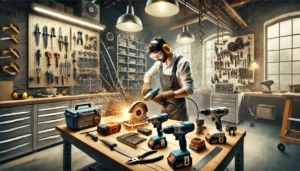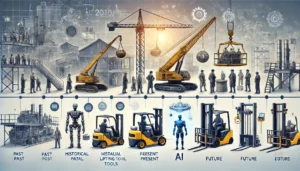Taking care of power tools is fundamental in maximizing their safety, life, and productivity. Ensuring that tools receive adequate maintenance also reduces the chances of malfunctions and expensive repairs. Failure to tend to them can lead to reputable service and value lost. The following are several maintenance practices for the maximization of the performance and longevity of your tools.
1. Regular Cleaning
After every use, power tools should be given a thorough cleaning. Failure to clean a tool can lead to overheating, diminished performance, and even breakdowns. Try not to capture dirt in contact with power tools during use. Wipe down surfaces of the tools using a soft cloth. Canned air can also be used to get rid of debris on vents and housing motors that are hard to access. In the case of corded tools, examine power cords for fraying and check that battery compartments on cordless tools are free of rust.
2. Lubrication
To minimize friction and wear on power tools lubrication is very important. Please adhere to the user’s manual when applying lubricants to components like gears and bearings. There is also a risk in over-lubricating, as excessive dust and dirt may accumulate in the parts. In the long run, proper lubrication ensures optimum performance while extending useful life of the internal components.
3. Sharpening Blades and Bits
Power tools need to be serviced regularly to maintain their performance. Tools that cut, saw, drill, or sand as example saw blades and drill bits will become dull as time passes. The more blunt blades or bits become the harder they need to work and greatly diminishes the efficiency of both the tool and material. It is important, therefore, to sharpen tools periodically to ensure optimal cutting power. Sharp blades and bits are paramount in optimal tool performance while reducing strain on the motor and extending the useful life of the tool.
4. Battery Care (For Cordless Tools)
To ensure optimum performance on cordless power tools, battery care is extremely important. Make sure never to let your batteries discharge to zero, always try to recharge around 20-30%. Try to store the batteries in a cool, dry, and moderate temperature area, hot and cold extremes will lessen battery life. Try to check contacts for corrosion and clean with a dry cloth if needed to prevent issues with the tool’s power supply interfering with clean batteries.
5. Calibration and Alignment
Tools that require high levels of precision such as drills, saws and sanders will always need periodic calibration and alignment. Misalignment leads to incongruent results on power tools, and parts shifting can be the cause of this. Make it a goal to check your tools periodically for any signs of misalignment or inaccurately done work. Make sure to refer to the manufacturer’s guidelines on how to keep tools precise, and for details on the intervals on calibrations.
6. Proper Storage
How you store your power tools is essential in their preservation. They need to be kept in a place without moisture and dust and where temperatures cannot get too hot or cold. Consider using toolboxes, cabinets, or even wall-mounted racks so the tools are safe from damage. If some tools are kept inside, they should be stored so they do not get exposed to water which can result in rust or corrosion. For tools used outdoors, protective covers can shield them from the elements.
7. Pre-Use Inspection
Identifiable risks can be diminished with an effective pre-operative inspection. Using a power tool requires that the user carries out a quick inspection to ensure everything is working and that all required safety features are in place. Check for any loose parts, safety features that are missing, frayed wires, or damage to the tool. Also check that the source of power is functional – whether it is a battery or cords. Ensuring efficient operation of the tool helps to prevent accidents.
8. Follow Manufacturer’s Guidelines
Every power tool must always be adhered to a prescribed level of maintenance which can only be achieved by following the manufacturer’s guidelines. The parts of a power tool that need cleaning, lubricating, calibrating considering and even part replacements are covered in these guidelines. Following these guidelines will make certain that the tool works as intended and avoid excessive use and damage to the equipment. Guidelines that are made by the manufacturer are the easiest way to ensure that the tool retains its functionality for a longer period of time and does not get damaged easily.
9. Regular Replacement of Worn Parts
Blades, brushes, and bits will atrophy over time and need to be regularly inspected. These atrophied components will also need replacements. If broken tools are worn out, it can lead to the tool underperforming or debilitating entirely. High grade and reputable brands should always be the go to when it comes to firm replacement components.
10. Safe Operation Practices
Similar to how proper upkeep is crucial, safe operation of the equipment is also important. Always keep safety procedures in mind whenever you are operating power tools so that you do not accidentally hurt yourself or cause damage to the tool. You have to ensure that you’re acquainted with the tool’s security features like guards, safety blades, triggers, switches, etc. Make sure these safety components are checked regularly so that they are in good working order. The use of tools under safe practices will minimize excessive damage on the power tools and keep you safe whilst using them.
Conclusion
Performing regular maintenance will make sure your power tools are functioning at their highest level, have optimal longevity, and remain safe to operate. Upkeep of power tools involves cleaning, lubrication, battery maintenance, and changing worn out parts. By following these easy maintenance suggestions, along with what the manufacturer specifies, you will ensure that your tools will always perform at their peak while increasing their lifespan. Proper maintenance not only reduces costs associated with repairs and replacement, but also helps promote better work efficiency and a safe work environment.










